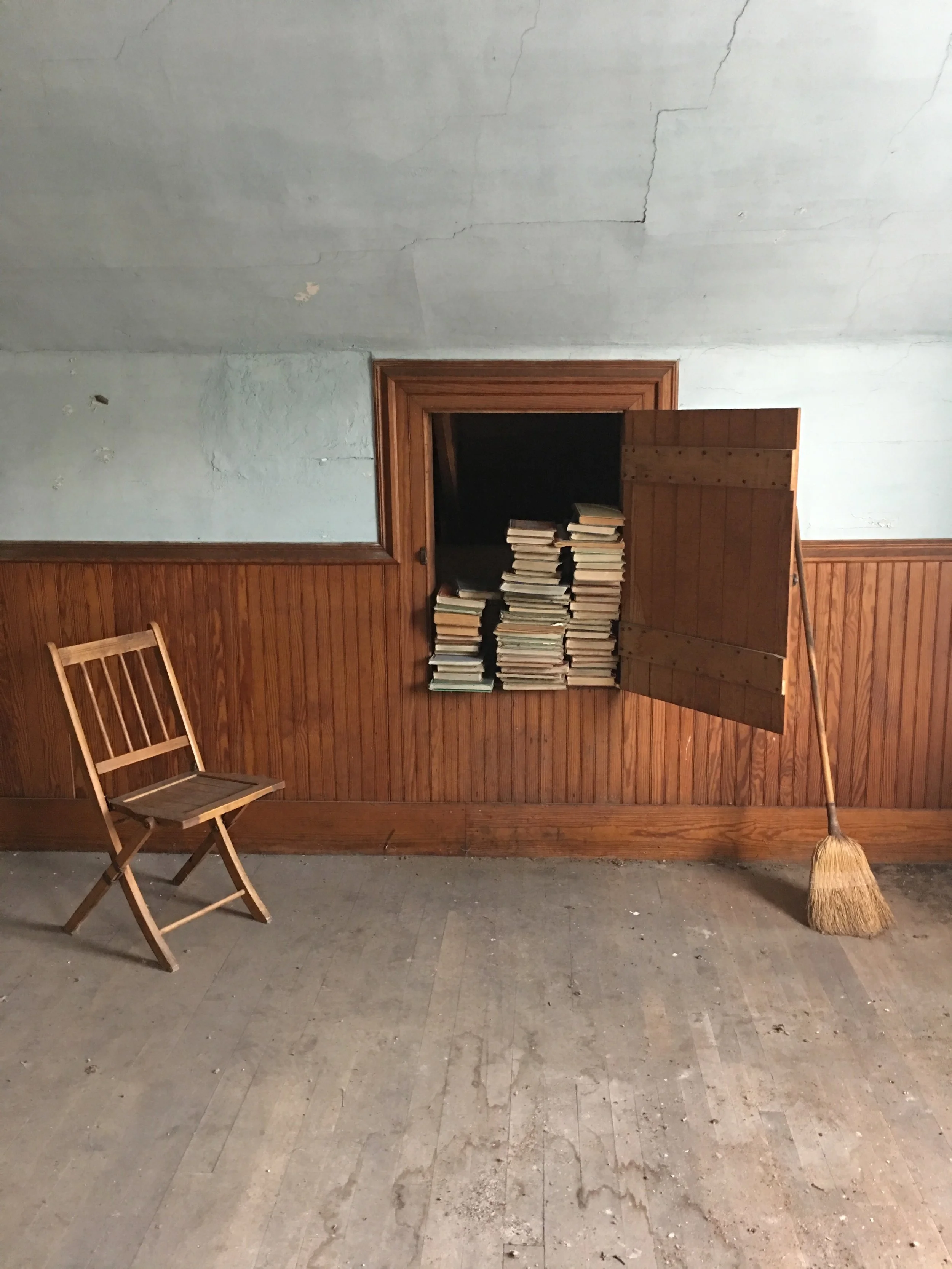Reviving the Grange Hall
Back before Route 100 was widened and paved into a state highway that cuts north through the center of Lamoille County, the village of North Hyde Park had sidewalks. Or dirt footpaths anyway, connecting the cluster of farm houses and small businesses that made up the little neighborhood. The village today includes the post office, a lumber mill, two churches (one quietly active on Sunday mornings, one vacant) and a few light manufacturing businesses on the outskirts. But locals still refer to certain residences by their former role in the community. My next door neighbors live in “the old general store” and down the street a lady owns a house known as “the old hotel.” I’ve heard some talk of maybe putting in sidewalks or street lamps to help liven up the neighborhood, but as my old-timer neighbor Griswold observed with a shrug, “Why would we need sidewalks? There’s no place to go to.”
And he has a point. The general stores are all gone. The local school house, gone. The tow rope that used to pull skiers up the hill behind our house, long gone aside from a slab of concrete deep in the maple woods. Trucks on Route 100 speed by and it’s best to just stay out of their way. I don’t even let my daughter venture down our driveway or into the front yard for fear a car will clip her.
Of all the old-this and old-that buildings in my neighborhood, the one that has most captured my imagination is the old Grange Hall that sits just up the road from our house. Having grown up in suburban Chicago in an area that erased its agrarian identity in the post-war housing sprawl, I was unfamiliar with the concept of The Grange. I learned that The Grange, or officially The National Grange of the Order of Patrons of Husbandry, was an organization started after the Civil War in the spirit of collective learning and collaboration among rural farmers. As a movement they were able to fight for political action that would benefit individual farming families who were facing growing challenges from monopolistic corporations like the railroads. It was designed in the vein of other fraternal organizations like the Freemasons; meetings were secretive and had special rituals. But unlike most fraternal orders of those days, women were encouraged to join. Of course, like most well-meaning efforts to fight the man with collective action, the Grange’s strength was sapped over time and the organization exists today as more of a social club or community circle for rural old-timers. The Gihon Valley Grange Hall, as this particular building was known, functioned for many years as a social venue. The main floor had a stage for live music and performances, the second floor had rooms for social club meetings and a library, and the top floor housed the Grand Army of the Republic’s local office for whatever it was the Grand Army of the Republic was up to.
Today the Grange Hall sits empty. A withered wreath still adorns the front porch from the last “old timers day” annual celebration that is now several years behind schedule since every year there are fewer and fewer old-timers who remember the heydays. I had the opportunity recently to step inside the dusty old hall with an old-timer named Al. Some years ago the Grange Hall was sold or ceded to our town and is now under the purview of the Hyde Park Historical Society. If the meeting minutes on our town website and the withered wreath on the porch are any indication, the historical society hasn’t gotten around to meeting for a few years, but the town did want to take care of a leak in the building’s roof before the remaining integrity of the three-story structure was compromised. As a curious neighbor, I tagged along with Al as he and Ron, our town administrator, aired out the building one fall afternoon and inspected the rafters.
“I remember back in, I think it was ‘66, I came down here for a dance,” Al reminisced. “Hundreds of people had come. I think five hundred people showed up. I couldn’t even get in the door and had to turn around and head home.” I tried to imagine the Grange Hall as the social destination that it once was, young people from all over the area gathering in our sleepy village. Upstairs an old piano sat rotting in the corner, and in the stuffy, closed-up air of the room I could almost feel the body heat of hundreds of people dancing and laughing.
Later that night I posted photos of the building on Instagram and asked my friends, “Who wants to help us revive it as a music venue (someday)?” See, my husband and I are musicians, and we both grew up attending and playing DIY rock and punk shows held in shabby old buildings much like the Gihon Valley Grange -- VFW halls, church basements, bowling alleys. My DIY instinct, plus years of living in the city where real estate comes at a premium, immediately caused me to start plotting how to revive the Grange Hall as a community-driven cultural center. A quirky home for the arts. I was overwhelmed by the enthusiasm my friends shared in their comments. “On my way!” “I’m in!” “OMG yes make it a venue!”
I’m not sure we’ll be dusting off the piano or plugging in amps any time soon at the old Grange Hall, but I felt invigorated by the idea that even as the old-timers are moving on, there are always new people seeking a place to create community. And as a newcomer to these parts, whether it’s in the Grange Hall or not, I could be the spark that starts the fire and creates the hearth for others nearby to gather around.






